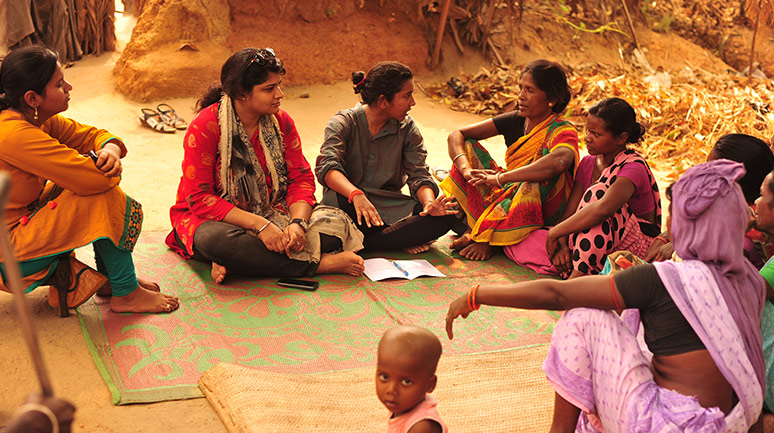Women in Villages Stories from the Field


Creating awareness through collectivization, about prevailing patriarchal-hierarchical structures and about women normalizing beliefs that define their existence as ‘inferior’ and confine them to being mother, daughter, wife, or domestic laborer, is a slow albeit rewarding journey.
“One is not born a woman but rather becomes a woman.”
Introduction
T HE ABOVE QUOTE SUGGESTS that what we are today is not a result of our birth but what we become as we interact with the world around us. Social customs, beliefs and traditions, however, create a distinction between a boy and a girl, resulting in inequality and leading to the victimization of women.
Over time, women have come to be considered the ‘inferior’ gender, and social norms have led to their oppression. The patriarchal-hierarchical structures that have emerged define a woman’s existence only as a mother, a daughter, a wife, and a domestic laborer.
When working in one of the villages of Boarijore in Jharkhand, I observed the day-to-day lives of the people and noticed how oppressed women are in our society. For example, despite a woman being the head of her household after the demise of her husband, she struggles to have the same hold in the community that her husband had. Even if the woman is literate, society will still see her as a caretaker only. The multitude of tasks she performs through the day go unrecognized. Although the Santhali culture prides itself in giving enough freedom for women to choose and decide who they wish to marry, in reality women are still oppressed.
Although the Santhali culture prides itself in giving enough freedom for women to choose and decide who they wish to marry, in reality women are still oppressed

